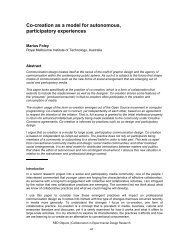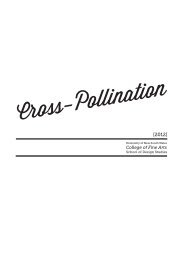Ceramic Tableware Recycling by Green Life 21 Project - Red Objects
Ceramic Tableware Recycling by Green Life 21 Project - Red Objects
Ceramic Tableware Recycling by Green Life 21 Project - Red Objects
Create successful ePaper yourself
Turn your PDF publications into a flip-book with our unique Google optimized e-Paper software.
In this network, the collected wares that can be used again are sold as used goods ( MOTTAINAI<br />
EVENT) and only the leftover tableware is used for recycling. This activity places a priority on reuse,<br />
which has a smaller environmental impact than recycling, and similar activities <strong>by</strong> civic groups<br />
around the country have become increasingly significant.<br />
(2) Cooperation with Local Governments<br />
16 local governments in Japan have started to collect used tableware as general waste. The<br />
collection system varies, such as when the local government itself collects used wares, or when it<br />
entrusts collection to citizens or NPOs. In each case, however, the aim is to reduce nonflammable<br />
waste and landfill costs and to provide education on a recyclable society to its citizens. The activity<br />
is not limited solely to this collection activity, but there are also many cases where recycled products<br />
that are recovered <strong>by</strong> collection, such as Re-shokki, etc., are procured within the area where used<br />
tableware was collected. The results of a survey on citizen awareness of tableware recycling are<br />
shown in Figure 7 for your reference (Hasegawa et al. 2007). In 2007, Meijo University, the author<br />
and other staff members conducted a questionnaire (sample number: 595) with citizens of Tajimi<br />
City where the Mino ware production area is situated. As you can see from this figure, many citizens<br />
are supportive of the collection and recycling of used tableware. In fact, the Tajimi City government<br />
started collection in 2010 based on the results of this survey.<br />
Collection of used tableware<br />
Are you willing to<br />
4.7<br />
18.1<br />
3.2<br />
44.1<br />
29.2<br />
coo<br />
pera<br />
Cooperation(self-‐<br />
pay)<br />
Cooperation(the<br />
burden of city)<br />
Not<br />
unknown<br />
No answer<br />
Fig. 7 Public awareness of the collection of ceramic tableware and cooperation <strong>by</strong> citizens<br />
5. Recycled <strong>Tableware</strong> and Eco-Design<br />
When developing recycled tableware, it is important to consider the environmental impact<br />
throughout the tableware life-cycle as well as resource recycling. The GL<strong>21</strong> takes the reduction of<br />
the environmental burden into consideration as much as possible during the stages of clay<br />
preparation, pottery manufacturing, logistics, use and recycling at the stage of product planning and<br />
reflects these considerations in its designs. This eco-design is performed in cooperation with<br />
housing equipment manufacturers, design sectors of universities and designers in Japan and<br />
overseas. While the need for eco-friendly manufacturing is increasing and international regulations<br />
are becoming stricter, eco design that takes resource saving, energy saving and safety into<br />
consideration has become a vital issue even for traditional production areas. The environmental<br />
considerations of Re-shokki and Saisei-001, which are the leading designs presented as a solution<br />
to the aforementioned issue, are stated in the following section (Figure 8).<br />
First, during the manufacturing stage, not only the use of recycled materials is taken into<br />
consideration, but adopting a simple shape that improves productivity, reducing the use of metal<br />
oxides, which are considered to be harmful, and simplifying the manufacturing process <strong>by</strong> omitting<br />
the painting process are included as well. At the stage of usage, items were selected that can adapt<br />
to various Japanese dining styles as well as frequent use and they were examined in terms of<br />
aesthetic design in addition to easy washing and easy storage, in consideration of extending<br />
product life. In the recycling stage, composition using different materials in products was avoided<br />
RED <strong>Objects</strong>⏐⏐Collaboration in Experimental Design Research<br />
79<br />
Would you like to recycle your tableware<br />
?<br />
no answer 2.9<br />
no<br />
yes<br />
5.2<br />
0 20 40 60 80 100<br />
91.9




